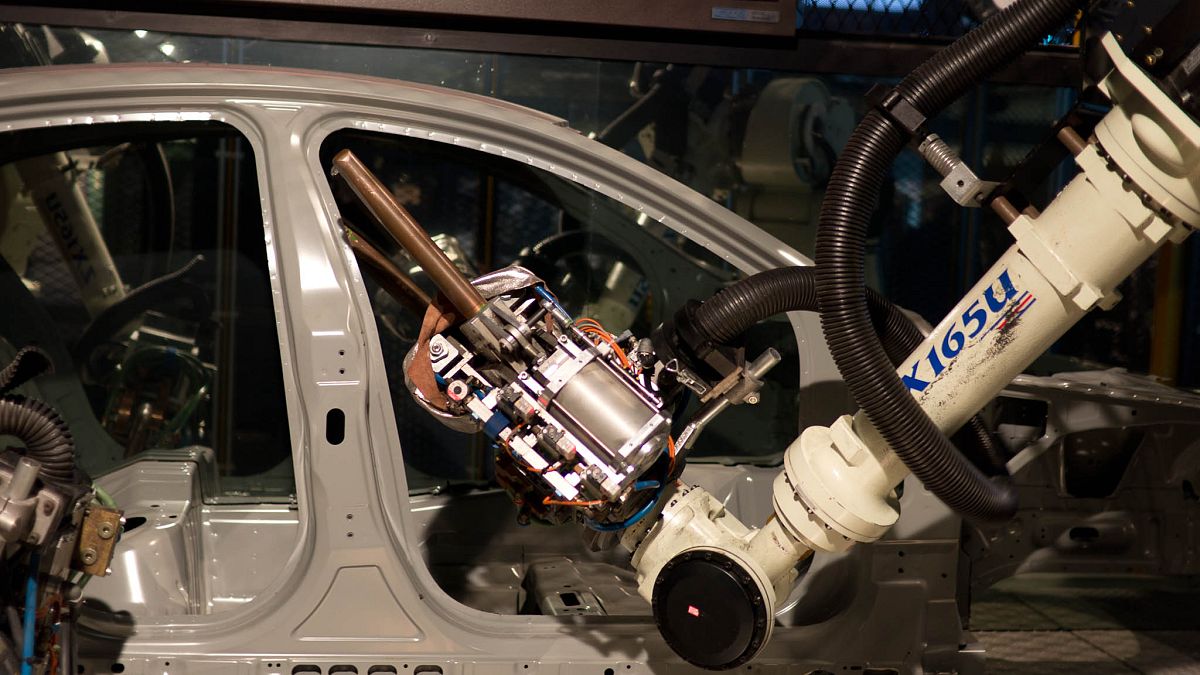The European Commission will publish an EU-wide strategy paper next year to ensure synergy across the continent in the uptake of AI-powered robotics.
The EU executive will work closely with the 27 member states in the first two quarters of this year with the aim of developing an “AI-powered” robotics strategy, to ensure that Europe stays an important player in the field, according to minutes of an internal meeting seen by Euronews.
The strategy will address all aspects of development and adoption of robotics and will be linked to other relevant commission plans such as the AI in workplace initiative, and the AI Act.
The increased demand for robots, mostly used in industries such as healthcare, agri-food, logistics and manufacturing, creates challenges related to workforce adaptation and safety.
The plan would therefore guarantee the responsible and ethical deployment of robots, looking at privacy, cybersecurity, transparency, and accountability risks and measures, according to the minutes of an internal expert group meeting.
A coordinated action plan on robotics published by the commission in 2021 encouraged member states to set up national robotics plans. The internal memo said that EU countries will now be asked to provide an overview of their domestic strategies which will form the basis of consultation meetings on the bloc-wide strategy scheduled to start in February.
Eventually, governments will be asked to set up their own investment proposals and work with standard bodies on common standards. The commission is also planning to set up a so-called robotics observatory and will review current roadblocks to development and uptake of robotics.
Demand
Over the past decade, the European industrial robotics industry, has grown significantly; member states together installed almost 72,000 units in 2022 – up 6% year-on-year, according to figures by the International Federation of Robotics (IFR).
The top five adopting countries are Germany, Italy, France, Spain and Poland, which together account for about 70% of all industrial robots installed within the EU in 2022. This makes Europe the second largest global region in robotics uptake after China.
Some countries, such as Germany, are more advanced than others when it comes to national plans. The German government said it will hold a national conference on AI-based robotics in June. In addition, it will set up a robotics institute with a focus on cloud and edge computing.
The commission's robotics strategy comes as it already made efforts to address these technologies, for example through updated machinery rules and the AI Act, the world’s first legislation with the aim to regulate artificial intelligence technology in a risk-based manner.
EU institutions last month reached a preliminary deal on the AI rulebook. Some technical details still need to be hammered out and a deal on those remaining parts is expected imminently.



